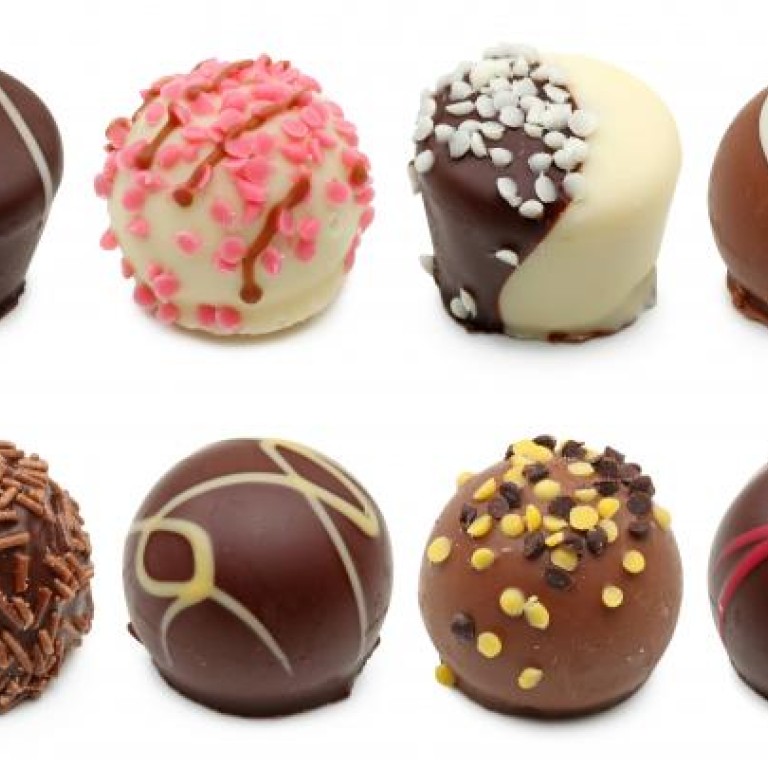
Guzzle chocolate while you can
Enjoy those Easter eggs while you have the chance, that’s the message from the world’s chocolate growers. It seems chocolate will soon become so expensive only the wealthy will be able to afford it. This could be the last Easter of reasonably-priced and plentiful chocolate as this year the industry has been hit by a double whammy: disease and scarcity. Remember the days when you could travel from Hong Kong to anywhere in China and encounter not one bite of chocolate - or indeed any western confectionery - in a supermarket or airport shop on the way?
Then about 10 years ago it changed, and cylinders of Dutch Droste chocolate discs started to appear in places like Zhuhai, at the ferry duty free shop. Then airports in China started to stock boxes of Belgian Guylian chocolate shells. Unfortunately in those early days the vendors did not understand the temperature requirements of a sensitive product like chocolate and more often than not the contents had a chalky bloom from being kept too warm. Then the upmarket Belgian mass producer Godiva bravely tackled the challenges of the cold chain in China.
Mainland shops that were serious about selling Western confectionery installed chiller units (if only they would do the same for make-up such as lipsticks that melts in summer) and it became safe to buy chocolate without being disappointed. And the more the Chinese travel, the more they try Western food and now chocolate, especially the expensive, high-grade, high cocoa, low dairy content brands are very popular. The tastes of middle class Indians have followed a similar path and between the growing appetites two vast nations, the world’s stock of chocolate is now under pressure.
So make the most of it. Diseases and bad weather in the tropics this year – chocolate cacao plants only flower in the tropics – have hit the crop badly. Witches broom and frosty pod rot cause up to US$750 million (HK$5.8 billion) of damage annually and this year will be worse than usual. But demand is running ahead of supply: by the end of this decade another million tons of chocolate would be needed to meet annual demand.
That’s equivalent to the yearly output of the Ivory Coast, the world’s biggest producer. But the amount of suitable land in cocoa growing areas will halve by 2050, as a result of global warming, according to the Bill and Melinda Gates Foundation.
Expect the price to rocket soon. Not since the Aztecs used cocoa as a currency – three beans bought a ripe avocado – has it been in such demand.
Help of sorts is at hand, now scientists have decoded cacao’s genome. Genetically modified chocolate, anyone?
Last year Godiva boldly announced plans to double the number of stories in China, making a total of 30 boutique shops in the three years since it expanded into China, Chief Executive Officer Jim Goldman said at Chocovision conference in Davos in Switzerland last year. He envisaged Godiva having 100 outlets in China in four years.
“China is less than 5 per cent of our revenue, but it’s the fastest-growing piece of the puzzle,” Goldman said. “Over time, we’ll be in the hundreds of stores in China.” Consumers in China spend more than US$1.1 billion (HK$8.54 billion) on chocolate annually, and researcher Mintel predicted the market would grow 11 per cent from 2010 to 2014.
Mars out front in China
For now, mass market brand Mars’ Dove chocolate is the mainland leader, with about half of the market. Ferrero SpA, maker of Nutella chocolate spread, comes next with about 10 per cent, tailed by local Chinese brand Le Conte with about 6 per cent. China’s chocolate buyers stock up both for their own consumption and for gifts, especially around holidays like Spring Festival and Golden Week. Chocolate is not cheap in China. Prices vary according to where you buy, but expect to pay upwards of 1,350 yuan (HK$1,673) for a selection of boxed chocolates. And as scarcity bites, expect to pay even more.

